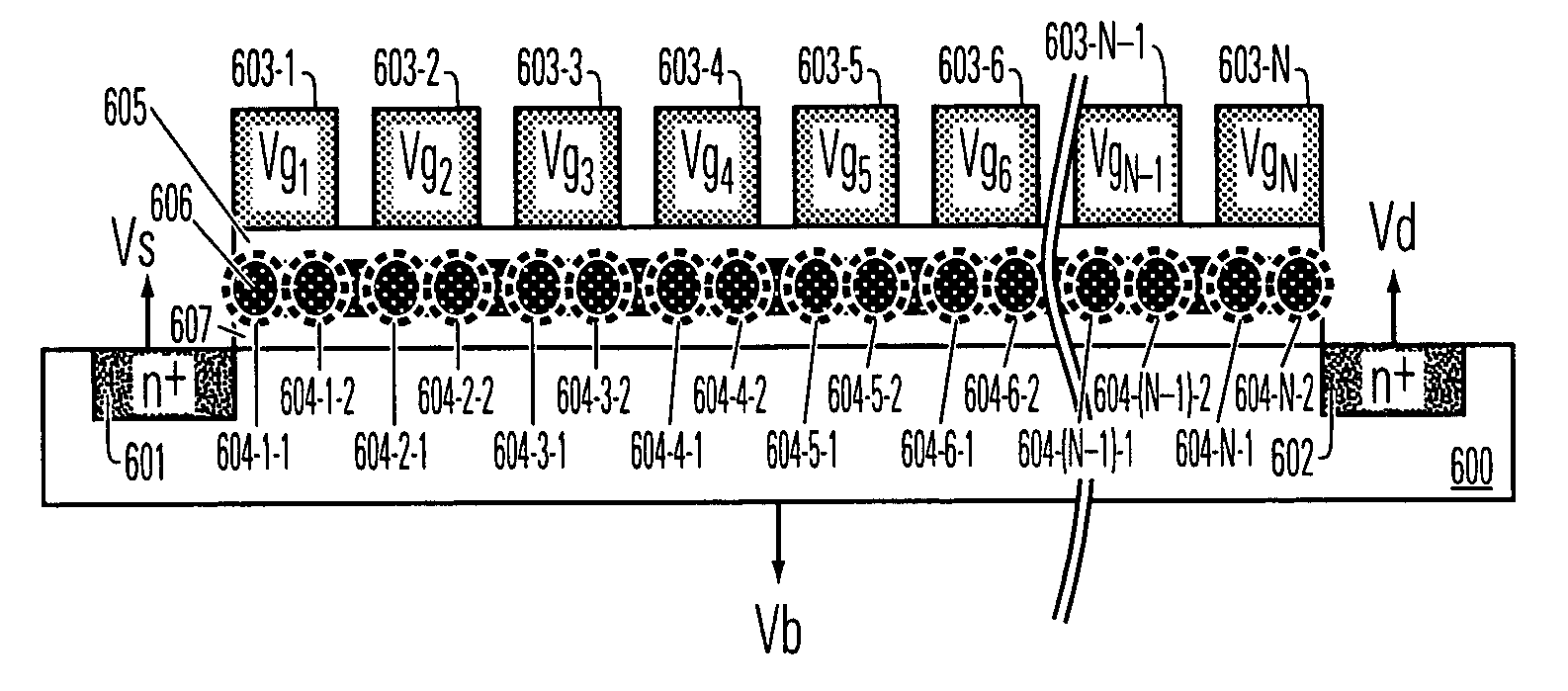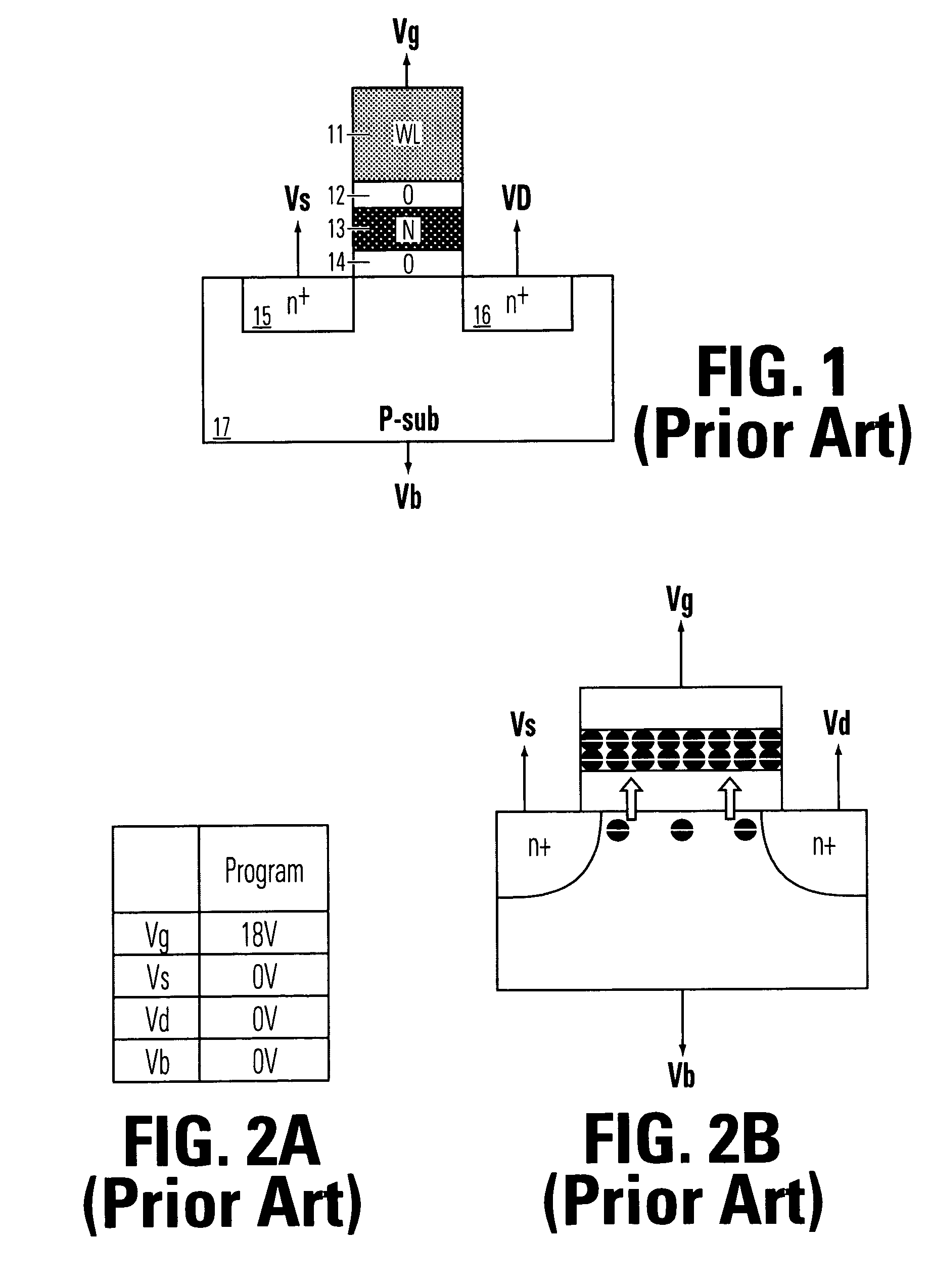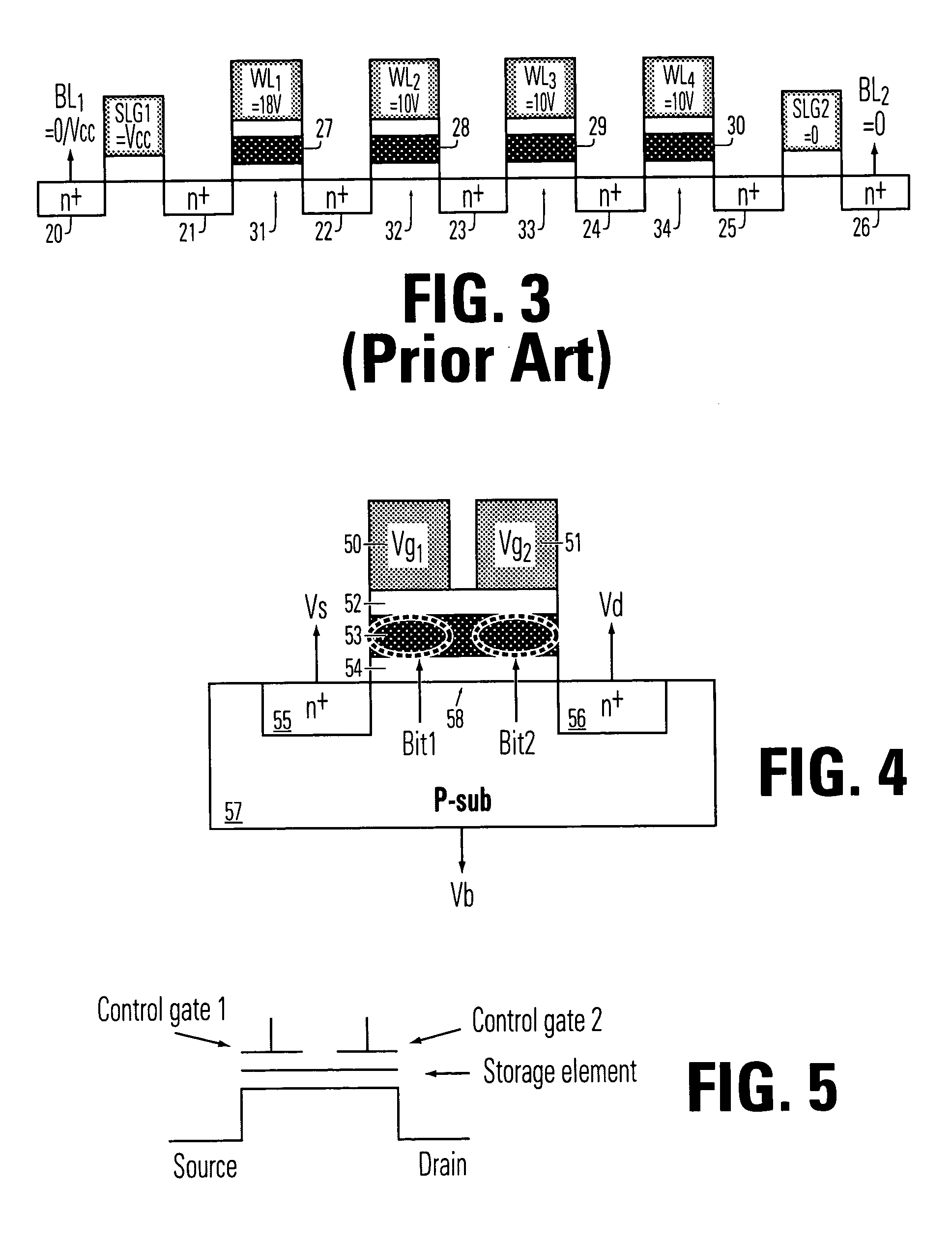Charge trapping non-volatile memory with two trapping locations per gate, and method for operating same
a non-volatile memory and gate technology, applied in the field of memory cell and operating method, can solve the problems of increasing significant charge injection, and one limitation on the size of traditional memory cells, and achieve the effect of improving isolation
- Summary
- Abstract
- Description
- Claims
- Application Information
AI Technical Summary
Benefits of technology
Problems solved by technology
Method used
Image
Examples
Embodiment Construction
[0104]A detailed description of embodiments of the present invention is provided with reference to the FIGS. 4–51.
[0105]As generally used herein, programming refers to setting the threshold voltage of selected memory locations bit-by-bit, and erasing refers to setting the threshold voltage of a selected block of memory locations, or selected memory locations, to an “erase condition,” including flash erase of an entire array or sector of an array. Data is written in embodiments of the invention by a procedure including, first, an erase process for a designated block to set the memory locations in the block to an erase threshold, which is typically one of a high or low threshold state, followed by a program process for memory locations in the block to set the selected memory locations to the program state, which is typically the other of the high or low threshold states, while leaving the unselected memory locations in the block in the erase state. Embodiments of the technology descri...
PUM
 Login to View More
Login to View More Abstract
Description
Claims
Application Information
 Login to View More
Login to View More - R&D
- Intellectual Property
- Life Sciences
- Materials
- Tech Scout
- Unparalleled Data Quality
- Higher Quality Content
- 60% Fewer Hallucinations
Browse by: Latest US Patents, China's latest patents, Technical Efficacy Thesaurus, Application Domain, Technology Topic, Popular Technical Reports.
© 2025 PatSnap. All rights reserved.Legal|Privacy policy|Modern Slavery Act Transparency Statement|Sitemap|About US| Contact US: help@patsnap.com



